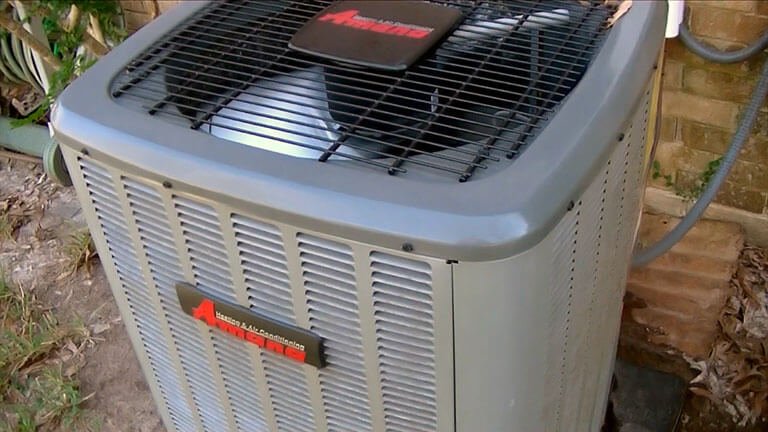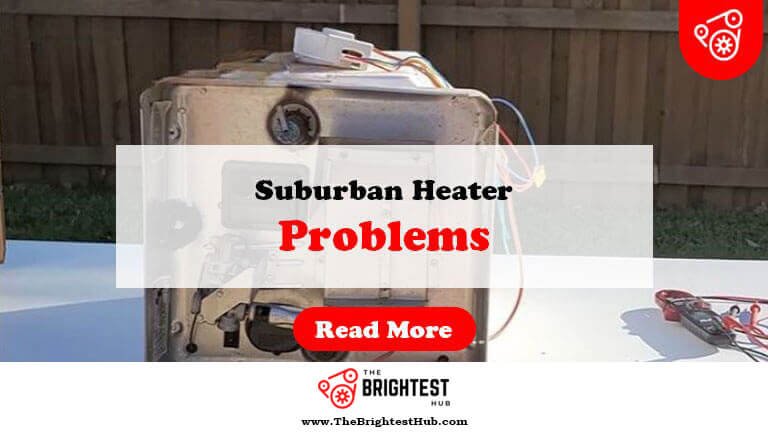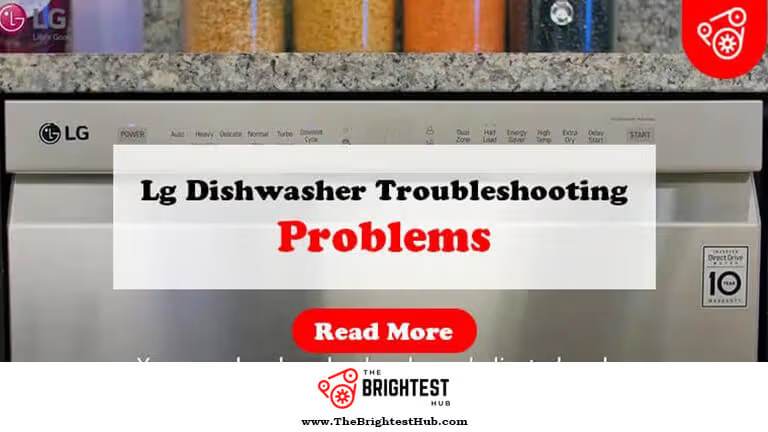Amana Heat Pump Problems: Quick Fixes & Solutions
Amana heat pump problems often stem from issues like thermostat malfunctions or refrigerant leaks. Regular maintenance can prevent many common issues.
Amana heat pumps are known for their efficiency and reliability, but like any system, they can encounter problems. Homeowners may experience issues such as inconsistent heating or cooling, strange noises, or increased energy bills. Understanding these potential problems can help you troubleshoot effectively.
Regular maintenance is crucial for optimal performance. Keeping filters clean and scheduling annual check-ups can significantly extend your unit’s lifespan. Knowing the signs of trouble allows for timely repairs, minimizing discomfort and costly breakdowns. This guide will explore common Amana heat pump problems, how to identify them, and tips for effective solutions, ensuring your system runs smoothly year-round.
Introduction To Amana Heat Pumps

Amana heat pumps are popular choices for home heating and cooling. They offer energy efficiency and comfort. Many homeowners appreciate their reliability and performance. Understanding common problems can help you maintain them better.
Popularity And Reliability
Amana heat pumps enjoy a solid reputation. They are known for their durability and efficiency. Many users prefer them for various reasons:
- Energy Efficiency: They help reduce energy bills.
- Quiet Operation: They run quietly without disturbing the peace.
- Advanced Technology: They often include smart home compatibility.
- Warranty: Amana offers strong warranties for peace of mind.
Reliability is a key factor for homeowners. Many users report long-lasting performance. Regular maintenance can enhance their lifespan even further.
Common Issues Users Face
Despite their popularity, Amana heat pumps can have problems. Here are some common issues users may encounter:
- Insufficient Heating or Cooling: The system may not reach desired temperatures.
- Noisy Operation: Unusual sounds can indicate problems.
- Frequent Cycling: The system may turn on and off too often.
- Frost Build-up: Ice can form on outdoor units, affecting performance.
- Refrigerant Leaks: Low refrigerant can lead to inefficiency.
Identifying these issues early can save time and money. Regular inspections help keep your Amana heat pump running smoothly.
Troubleshooting Basics
Troubleshooting your Amana heat pump can save time and money. Understanding common issues helps you fix problems quickly. Start with basic checks before calling a technician. This guide covers essential steps to identify and address heat pump problems.
Safety First: Precautions To Take
Safety is crucial during troubleshooting. Follow these simple safety tips:
- Turn off the power to the heat pump.
- Wear gloves to protect your hands.
- Use a flashlight for better visibility.
- Keep children and pets away from the work area.
These precautions help prevent injuries and accidents.
Identifying Your Heat Pump Model
Knowing your heat pump model is essential. It helps you find the right solutions. Follow these steps to identify your model:
- Locate the model number on the unit.
- Check the user manual for details.
- Search online using the model number.
Here is a simple table to help with identification:
| Model Series | Features |
|---|---|
| AMH Series | High efficiency, quiet operation |
| AVZ Series | Variable speed, energy-saving |
| ASZ Series | Durable, reliable heating |
Identifying your model helps in troubleshooting effectively.
Frequent Cycling And Its Fixes
Frequent cycling in an Amana heat pump can be frustrating. It means the system turns on and off too often. This issue can lead to higher energy bills and reduced comfort. Understanding the causes and fixes can help restore efficiency.
Possible Causes
- Thermostat Issues: Incorrect settings or faulty thermostat.
- Dirty Air Filters: Clogged filters restrict airflow.
- Refrigerant Problems: Low refrigerant levels can cause cycling.
- Improper Sizing: A system too large or too small for the space.
- Electrical Problems: Faulty wiring can disrupt operation.
Step-by-step Solutions
- Check the Thermostat:
- Ensure it is set correctly.
- Replace batteries if needed.
- Consider upgrading to a smart thermostat.
- Clean or Replace Air Filters:
- Locate the air filter.
- Remove and inspect for dirt.
- Clean or replace as necessary.
- Inspect Refrigerant Levels:
- Check for leaks.
- Contact a professional to refill if low.
- Assess System Size:
- Consult an HVAC technician for evaluation.
- Consider replacing the unit if improperly sized.
- Examine Electrical Components:
- Inspect wiring for damage.
- Replace any faulty parts as needed.
Following these steps can help resolve frequent cycling issues. Regular maintenance ensures your Amana heat pump runs smoothly.
Heat Pump Not Heating
Experiencing issues with your Amana heat pump can be frustrating. One common problem is when the heat pump fails to heat your space properly. Understanding the reasons behind this issue is crucial. Let’s dive into diagnosing the problem and effective solutions.
Diagnosing The Problem
Identifying the cause of a heat pump not heating involves a few steps. Here are some common reasons:
- Thermostat Settings: Check if the thermostat is set correctly.
- Dirty Filters: Clogged filters can restrict airflow.
- Refrigerant Levels: Low refrigerant can affect heating efficiency.
- Electrical Issues: Faulty wiring may disrupt the heating process.
- Frozen Coils: Ice buildup on the coils can block heat transfer.
Effective Solutions
Once you identify the issue, you can apply these solutions:
- Adjust the Thermostat: Ensure it is set to heat mode.
- Replace Filters: Clean or replace dirty air filters.
- Check Refrigerant Levels: Contact a professional for refilling.
- Inspect Electrical Connections: Look for loose or damaged wires.
- Defrost Coils: Turn off the unit and let it thaw.
For persistent issues, consider consulting a technician. Regular maintenance can prevent many problems. Keep your heat pump running efficiently.
Dealing With A Noisy Heat Pump
Heat pumps are essential for comfort. A noisy heat pump can be annoying. Understanding the sounds can help you fix the problem. Some noises indicate serious issues. Others are just normal sounds.
Types Of Noises And Their Meanings
| Noise Type | Possible Cause |
|---|---|
| Banging | Loose parts or a broken component |
| Hissing | Refrigerant leak or airflow issue |
| Buzzing | Electrical issue or a failing motor |
| Clicking | Thermostat issues or debris in the fan |
| Whistling | Air leaks in ducts or vents |
Noise Reduction Techniques
Reducing noise can improve comfort. Try these techniques:
- Regular Maintenance: Schedule yearly check-ups.
- Insulate Ducts: Use duct insulation to lower sound.
- Install Vibration Pads: Place pads under the unit.
- Clean Components: Remove debris from fans and coils.
- Check for Loose Parts: Tighten screws and bolts.
Applying these methods can help you enjoy a quieter home. If noises persist, call a professional for assistance.
Frozen Heat Pump Coils
Frozen heat pump coils can cause major issues. A heat pump relies on its coils to transfer heat effectively. When these coils freeze, the system struggles to maintain temperature. This problem can lead to increased energy bills and system failure.
Why It Happens
Several factors can lead to frozen heat pump coils:
- Low Refrigerant Levels: Insufficient refrigerant can cause freezing.
- Poor Airflow: Blocked filters or vents restrict airflow.
- Cold Weather: Extreme temperatures can lead to ice formation.
- Faulty Defrost Cycle: An ineffective defrost cycle contributes to freezing.
Defrosting Procedures
Defrosting your heat pump is essential for proper function. Follow these steps:
- Turn Off the System: Switch off the heat pump to prevent damage.
- Clear Ice: Gently remove ice using a plastic scraper.
- Check Filters: Ensure filters are clean and unblocked.
- Inspect Ducts: Make sure ducts are clear of obstructions.
- Restart the System: Turn the heat pump back on.
If problems persist, consider calling a professional. Regular maintenance can prevent frozen coils.
Electrical Issues And Solutions
Amana heat pumps can face electrical problems. These issues can disrupt performance and comfort. Understanding these problems helps in quick solutions. Below are common electrical problems and how to fix them.
Tripped Breakers And Power Surges
Tripped breakers often cause heat pump failures. Power surges can overload the system. Here are some causes:
- Overloaded Circuit: Too many devices on one circuit.
- Short Circuit: Faulty wiring or damaged components.
- Ground Faults: Moisture or debris in electrical connections.
To address these issues:
- Check the breaker panel for tripped breakers.
- Reset the breaker if it has tripped.
- Avoid overloading circuits with too many appliances.
- Inspect wiring for damage or wear.
Resetting And Repairing Electrical Components
Sometimes, resetting components can resolve issues. Follow these steps:
- Locate the Disconnect Switch: Usually near the heat pump.
- Turn Off the Power: Switch off the disconnect and circuit breaker.
- Wait a Few Minutes: Allow time for the system to reset.
- Turn On the Power: Switch on the breaker and disconnect switch.
If problems persist, consider repairing components:
| Component | Common Issues | Repair Solutions |
|---|---|---|
| Capacitor | Weak performance | Replace the capacitor |
| Contactors | Clicking sound | Clean or replace contactors |
| Thermostat | No response | Recalibrate or replace the thermostat |
Smart Thermostat Compatibility
Smart thermostats offer convenience and energy efficiency. However, not all systems work well together. Amana heat pumps may face compatibility issues with some smart thermostats. Understanding these problems is crucial for optimal performance.
Integration Challenges
Integrating a smart thermostat with an Amana heat pump can pose challenges. Here are some common issues:
- Wiring compatibility: Different systems use various wiring configurations.
- Voltage requirements: Ensure the thermostat matches the heat pump’s voltage.
- Communication protocols: Some thermostats may not communicate effectively.
Before installation, check the specifications of both devices. Misalignment can lead to poor performance.
Ensuring Smooth Operation
Follow these steps to ensure smooth operation:
- Verify compatibility by checking the manufacturer’s guidelines.
- Use a professional for installation if unsure.
- Update the thermostat firmware regularly for optimal functionality.
Keep an eye on the system’s performance after installation. Look for:
- Unusual noises
- Inconsistent temperatures
- Frequent cycling on and off
Address any issues promptly. Proper integration leads to better energy savings.
Professional Repair Or Diy
Deciding between professional repair and DIY for your Amana heat pump is crucial. Understanding the issues helps you choose the best path. Some problems are simple fixes. Others require expert help. Knowing your limits saves time and money.
When To Call An Expert
Some situations clearly need a professional. Here are key signs:
- Frequent Breakdowns: Constant repairs signal deeper issues.
- Unusual Noises: Loud sounds can indicate mechanical failure.
- Electrical Problems: Flickering lights or tripped breakers need expert attention.
- Refrigerant Leaks: Handling refrigerants requires special training.
- Age of Unit: Older units often need more than just a simple fix.
Hiring a professional ensures safety and proper diagnostics. They have the tools and expertise to handle complex repairs.
Resources For Diy Enthusiasts
DIY can save money and enhance your skills. Utilize these resources:
- User Manual: Always refer to the manual for troubleshooting.
- Online Forums: Join forums for shared experiences and tips.
- YouTube Tutorials: Watch step-by-step videos for guidance.
- Local Classes: Attend workshops for hands-on learning.
Before starting any DIY project, assess your comfort level. Simple tasks like replacing filters are manageable. Complex issues require caution.
| Task | DIY Friendly | Expert Required |
|---|---|---|
| Replacing Air Filters | Yes | No |
| Cleaning Condenser Coils | Yes | No |
| Electrical Repairs | No | Yes |
| Refrigerant Recharge | No | Yes |
| Thermostat Issues | Yes | No |
Maintaining Your Amana Heat Pump
Regular maintenance keeps your Amana heat pump running smoothly. Proper care reduces problems and extends the unit’s lifespan. Here’s how to maintain your system effectively.
Regular Maintenance Schedule
Establish a maintenance schedule for your heat pump. This ensures you don’t miss important tasks. Follow these steps:
- Check air filters every month.
- Clean or replace filters as needed.
- Inspect the outdoor unit for debris.
- Clear leaves, dirt, and ice away.
- Schedule professional maintenance twice a year.
Following this schedule helps prevent major issues. Regular checks keep your system efficient.
Long-term Care Tips
Long-term care is crucial for your Amana heat pump. Consider these simple tips:
- Keep vents clear: Ensure no furniture blocks airflow.
- Monitor energy bills: Sudden changes may indicate issues.
- Inspect insulation: Ensure proper insulation around ducts.
- Check thermostat settings: Make sure it functions correctly.
Investing time in long-term care saves money. A well-maintained heat pump runs efficiently and lasts longer.
Warranty And Support
Amana heat pumps come with warranties that protect your investment. Understanding these warranties is crucial. Support options are also available to help you resolve issues quickly.
Understanding Your Coverage
Amana offers various warranty options for its heat pumps. The coverage may vary based on the model. Here’s a breakdown of what to expect:
| Component | Warranty Length |
|---|---|
| Compressor | 10 years |
| Parts | 5 years |
| Labor | Limited |
Check your specific model’s warranty details. Keep your purchase receipt. Register your product online for better coverage.
How To Get Support
Experiencing issues with your Amana heat pump? Getting support is simple. Follow these steps:
- Visit the Amana website.
- Navigate to the support section.
- Choose your product type.
- Locate troubleshooting guides.
- Contact customer service if needed.
Customer service options include:
- Phone support
- Email support
- Live chat options
Keep your model number ready for faster assistance. Promptly report any issues. This ensures your heat pump runs efficiently.
Frequently Asked Questions
What Are Common Amana Heat Pump Issues?
Amana heat pumps often face problems like insufficient heating, unusual noises, and short cycling. Regular maintenance can help prevent these issues.
How Can I Troubleshoot My Amana Heat Pump?
Start by checking filters, thermostat settings, and power supply. Clean or replace filters regularly for optimal performance.
Why Is My Amana Heat Pump Not Heating?
Insufficient heating may result from a dirty filter, low refrigerant levels, or a malfunctioning thermostat. Inspect these components first.
What Does Short Cycling Mean In Heat Pumps?
Short cycling occurs when the heat pump frequently turns on and off. This can indicate a thermostat issue or an oversized unit.
How Often Should I Service My Amana Heat Pump?
Regular servicing is recommended at least once a year. This helps ensure efficiency and prolongs the lifespan of your heat pump.
Conclusion
Amana heat pump issues can disrupt your comfort. Regular maintenance is key to preventing many common problems. Be proactive in identifying signs of trouble early. Consulting a professional can save you time and money. Stay informed to ensure your system runs efficiently and keeps your home cozy all year round.






